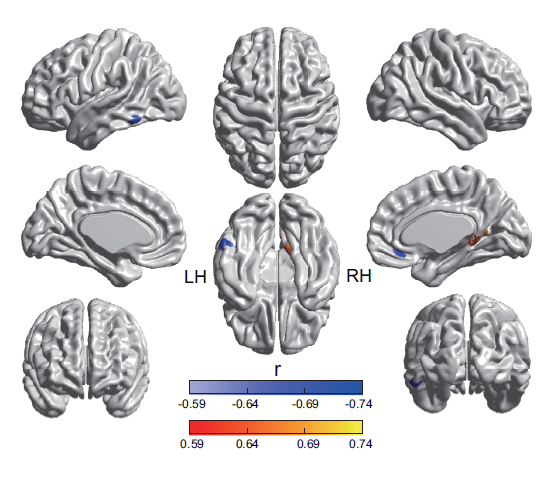On January 20
th,
Current Biology published an article titled “Function and Structure of Human Left Fusiform Cortex Are Closely Associated with Perceptual Learning of Faces”. This article is authored by Professor Fang Fang, co-authored by Bi Taiyong and Chen Juan, PhD graduates of Department of Psychology, PKU. The co-researchers are Professor Zhou Tiangang of Institute of Biophysics, Chinese Academy of Sciences, and He Yong, PhD in National Key Laboratory of Cognitive Neuroscience and Learning School of Brain and Cognitive Sciences, Beijing Normal University.

By observing the neural correlations of perceptual face recognition over a prolonged period with the use of functional and structural magnetic resonance imaging (MRI), researchers were able to discover the neural mechanisms behind long-lasting improvement in human perceptual ability. During the experiment, human subjects were trained to perform a face view discrimination task. Their behavioral performance and MRI signals were measured before, immediately after, and 1 month after training.
The researchers found that behavioral learning effects correlated with the stability improvement of spatial activity pattern in the left fusiform cortex of the subjects immediately after and 1 month after training. They also found that the thickness of the left fusiform cortex before training could predict subjects’ behavioral learning effects.
These findings are a significant contribution for suggesting that the improved pattern stability contributes to the long-term mechanisms of perceptual learning. Furthermore, the findings also provide strong and converging evidence for the pivotal role of the left fusiform cortex in adaptive face processing.
Professor Fang is Chang Jiang Distinguished Professor of Psychology, chair of the Department of Psychology, and executive associate director of the IDG/McGovern Institute for Brain Research at Peking University. His research seeks to understand the neural mechanisms of visual and cognitive processes by combining neuroimaging, psychophysical and computational techniques.
Written by YU SO-JIN



